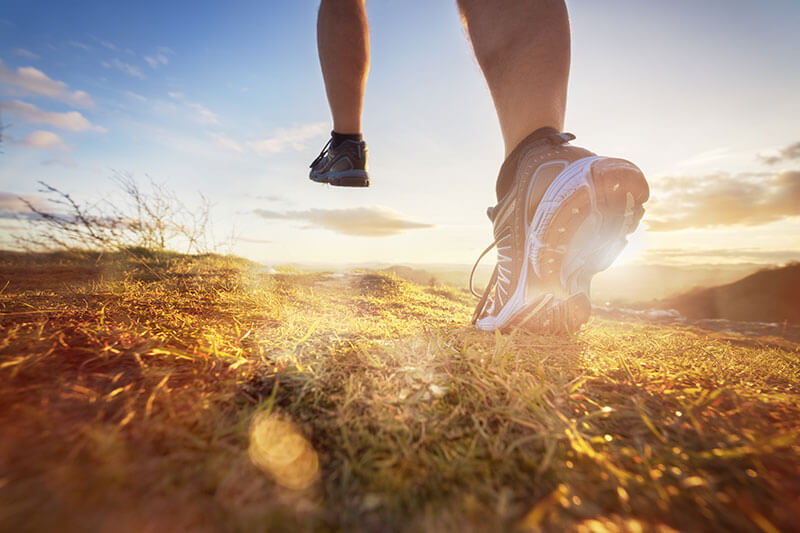Barb and Kari, the physical therapists at the Bariatric Center of KC, shared that we will be hosting a walk/run 5K to celebrate our patients. It is currently scheduled to be held here at Prairie Star on May 5th 2019, and all are welcome to come walk or run as little or as much as you want. It will not be timed, so you can walk/run as fast or as slow as you want!
It is always important to prepare for a “race” by focusing on a few things that can help prevent any injuries. One of the first things is to make sure you have a good running shoe. Whether you are walking or running or alternating between walking and running, you want to get a good “running shoe.” When looking for one, you want to go somewhere that will measure the length and width of your foot. We all need a shoe that will give you good support while allowing your foot the flexibility it needs to flatten out a little with each step.
Because most of us have a lower arch (Kari mentioned doing a “wet test” to see if you have a low or high arch. Wet your foot and then step onto some dry cement to see the footprint left.) You need a shoe that can bend in the toe area, but doesn’t bend in the middle. This will give your arch the support it needs, and still allow the flexibility your foot needs with each step. You want a shoe where the top half of the sole is straighter. With a high arch, you want a shoe that has a curved sole to allow for that flexibility.
If you experience plantar fasciitis you are going to need a more stable shoe. You can also look for a Dr. Scholl’s insert to put in your shoe. You don’t need expensive orthotics. For best fit, take out the current insole in the shoe and replace it with the insert for plantar fasciitis.
A good running shoe will usually cost around $100. To get the best price, go to good running store and have them do an assessment and fit. Then you can go online and see if you can get a better deal on that specific shoe. Just don’t make the mistake of buying a cheap shoe, as it can lead to injuries or pain in hips, knees or feet. Shoes should be replaced after 500 miles, as the material they are made of isn’t meant to last forever.
One of the biggest mistakes people make prior to going for a run is not warming up. You want to increase the blood flow to your legs and muscles by doing 5 minutes of walking followed by a few “dynamic stretching exercises.” These will increase your flexibility, coordination and decrease the tightness in your muscles reducing pain after the run. It will also lead to faster recovery after a run. Some of the exercises that Barb demonstrated were:
- Lunge walks –
- walk with long strides and bend knees a little with each step
- High knee marching steps –
- walk while lifting your thighs up high enough that they are parallel to the ground
- Butt kicks –
- walk trying to kick up your leg to hit your buttock as you walk
Always end each activity period with “static stretching” of the back of the thigh (hamstrings), front of the thigh (quadriceps), and the calves.
If your goal is to be a runner, start with a walk/run option. Jeff Galloway has a training site at www.jeffgalloway.com
He developed the walk/run option as he was trying to find a way to train for a marathon that would allow him to run long distances without injury. He alternates walking with running, and you can start as slowly as you need. You don’t want to run until it hurts. You want to learn to stop running and start walking before you get to that point. It allows you the benefits of running while also giving you short bursts of recovery so you can keep going. If you have been inactive for a long period of time, please meet with the physical therapists so they can help you get started.









